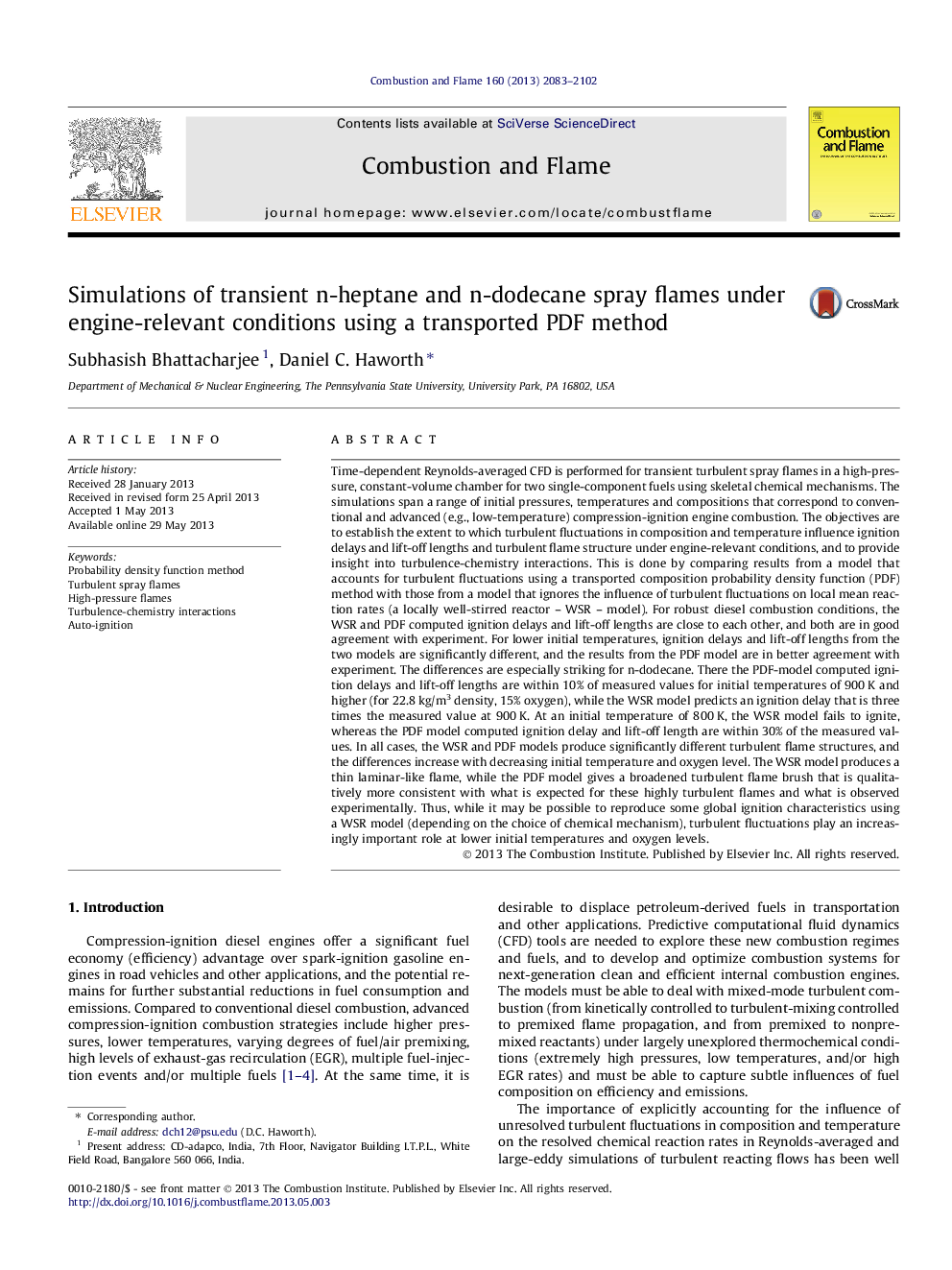| کد مقاله | کد نشریه | سال انتشار | مقاله انگلیسی | نسخه تمام متن |
|---|---|---|---|---|
| 10264811 | 458028 | 2013 | 20 صفحه PDF | دانلود رایگان |
عنوان انگلیسی مقاله ISI
Simulations of transient n-heptane and n-dodecane spray flames under engine-relevant conditions using a transported PDF method
دانلود مقاله + سفارش ترجمه
دانلود مقاله ISI انگلیسی
رایگان برای ایرانیان
کلمات کلیدی
موضوعات مرتبط
مهندسی و علوم پایه
مهندسی شیمی
مهندسی شیمی (عمومی)
پیش نمایش صفحه اول مقاله

چکیده انگلیسی
Time-dependent Reynolds-averaged CFD is performed for transient turbulent spray flames in a high-pressure, constant-volume chamber for two single-component fuels using skeletal chemical mechanisms. The simulations span a range of initial pressures, temperatures and compositions that correspond to conventional and advanced (e.g., low-temperature) compression-ignition engine combustion. The objectives are to establish the extent to which turbulent fluctuations in composition and temperature influence ignition delays and lift-off lengths and turbulent flame structure under engine-relevant conditions, and to provide insight into turbulence-chemistry interactions. This is done by comparing results from a model that accounts for turbulent fluctuations using a transported composition probability density function (PDF) method with those from a model that ignores the influence of turbulent fluctuations on local mean reaction rates (a locally well-stirred reactor - WSR - model). For robust diesel combustion conditions, the WSR and PDF computed ignition delays and lift-off lengths are close to each other, and both are in good agreement with experiment. For lower initial temperatures, ignition delays and lift-off lengths from the two models are significantly different, and the results from the PDF model are in better agreement with experiment. The differences are especially striking for n-dodecane. There the PDF-model computed ignition delays and lift-off lengths are within 10% of measured values for initial temperatures of 900Â K and higher (for 22.8Â kg/m3 density, 15% oxygen), while the WSR model predicts an ignition delay that is three times the measured value at 900Â K. At an initial temperature of 800Â K, the WSR model fails to ignite, whereas the PDF model computed ignition delay and lift-off length are within 30% of the measured values. In all cases, the WSR and PDF models produce significantly different turbulent flame structures, and the differences increase with decreasing initial temperature and oxygen level. The WSR model produces a thin laminar-like flame, while the PDF model gives a broadened turbulent flame brush that is qualitatively more consistent with what is expected for these highly turbulent flames and what is observed experimentally. Thus, while it may be possible to reproduce some global ignition characteristics using a WSR model (depending on the choice of chemical mechanism), turbulent fluctuations play an increasingly important role at lower initial temperatures and oxygen levels.
ناشر
Database: Elsevier - ScienceDirect (ساینس دایرکت)
Journal: Combustion and Flame - Volume 160, Issue 10, October 2013, Pages 2083-2102
Journal: Combustion and Flame - Volume 160, Issue 10, October 2013, Pages 2083-2102
نویسندگان
Subhasish Bhattacharjee, Daniel C. Haworth,